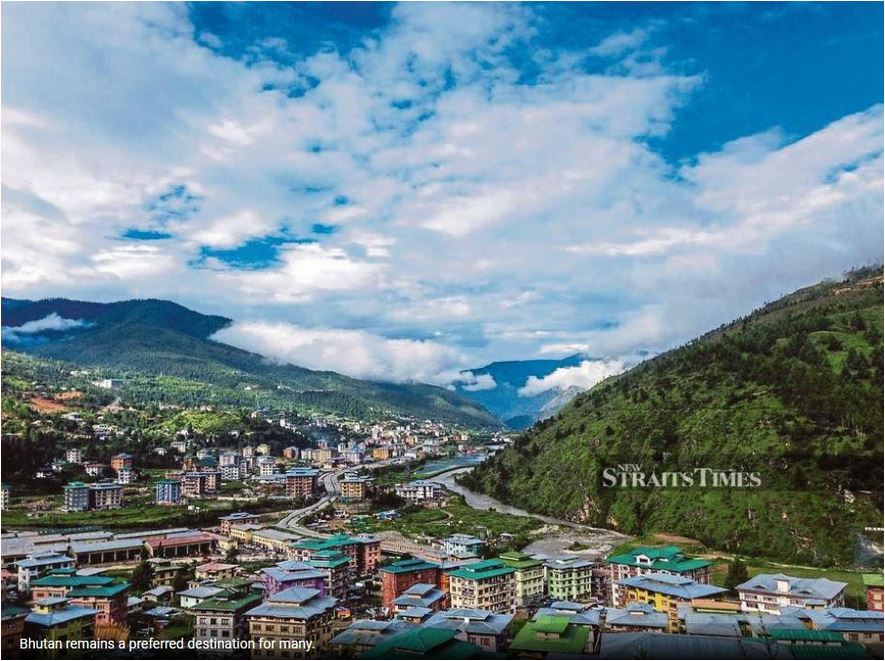A Bhutan guide for VMY 2020
Emeritus Professor Tan Sri Dato' Dzulkifli Abdul Razak
Opinion - New Straits Times
August 2, 2019

NOW that the muddled Visit Malaysia Year 2020 logo has been replaced by a new and attractive combination of the hornbill, hibiscus and ferns (paku pakis), Malaysians are relieved.
Still, there are challenges that remain daunting, especially in terms of breaking into the 30 million target for inbound visitors.
So far the numbers have been relatively low compared with neighbouring countries. To the north, the percentage increase has breached the 100 per cent mark, while to the south it is almost 60 per cent during the same period (from 2010 to 2018).
Sadly, Malaysia’s increase is only a single digit at less than five per cent. In terms of numbers, it is on average about two million visitors.
To make it worse, this minor increase is associated with tourists who have demonstrated “uncivilised” attitudes and behaviour.
Reportedly, this behaviour has included urinating in open public places (even places for ablutions were implicated), throwing rubbish out of apartment windows, washing personal garments at public fountains and drying them on public railings and fences, walking about publicly in undergarments, doing dance-like steps in skimpy clothing nearby houses of worship, creating noise pollution, and the list goes on.
Such tourists must not be allowed to flood our country.
There is much to be done, not just about meeting numbers and percentages but also the quality of visitors who are eligible to participate in the programme. In other words, it is not entirely about income and revenue, at the risk of losing out on our own decorum and dignity.
Here Bhutan may have a thing or two to offer because their approach seems to be just the opposite. Being a country that is more keen on Gross National Happiness (GNH) rather than Gross National Product, their approach is well anchored and well thought and guided by the GNH philosophy.
This came out clearly when it was recognised to be the only “carbon negative” country in the world as explained in this column last week.
Hence, although the number of arrivals may be small, the “quality traits” attached to them have brought in better returns without compromising the preservation of the ecosystem that continues to be pristine as its prized source of tourist attraction.
It is not for nothing that Bhutan is sought after in the area of eco-cultural tourism worldwide that most nations cannot claim anymore. It has to do with an enforceable strict code of etiquette called driglam namzha which the locals are expected to comply and for foreigners to observe and respect.
For example, the national dress, gho and kira, for males and females respectively, is worn by practically everyone regardless of status, giving a sense of oneness and an egalitarian status among them.
This in turn commands even greater respect from visitors who would have discerned the seriousness to remain disciplined. As such, they too have kept to a strict decorum as the Bhutanese do.
In terms of the natural world, Bhutan prohibits the scaling of the Himalayas in keeping with their belief that they are sacred, if not divine.
This is in contrast to what is being adopted by its neighbours, which of late have led to a death trap of sorts involving several foreign visitors.
In their obsession to conquer the various peaks and transforming the climb into an egocentric trip, pushing aside the all-important sacred aspects of the Himalayas. In terms of arts and culture, Bhutan exhibits a myriad of choices as part of the centuries- old evolution that is enshrined in its national way of life.
They range from architectural structures and designs to more routine items for everyday use such as food, dress, decoratives and the like.
Each has its own ornamental value that tourists are bound to treasure. To preserve and keep all these rich aspects alive, Bhutan ingeniously uses the visa to achieve its purpose in a deliberate manner.
The system not only facilitates accommodation, transport, food and even visits seamlessly for each visitor, it also ensures ecological protection is upheld when “uncivilised” visitors are weeded out, ensuring delivery of “happiness” to its best.
It is no wonder then why Bhutan remains a preferred destination for many.
The writer, an NST columnist for more than 20 years, is International Islamic University Malaysia rector
